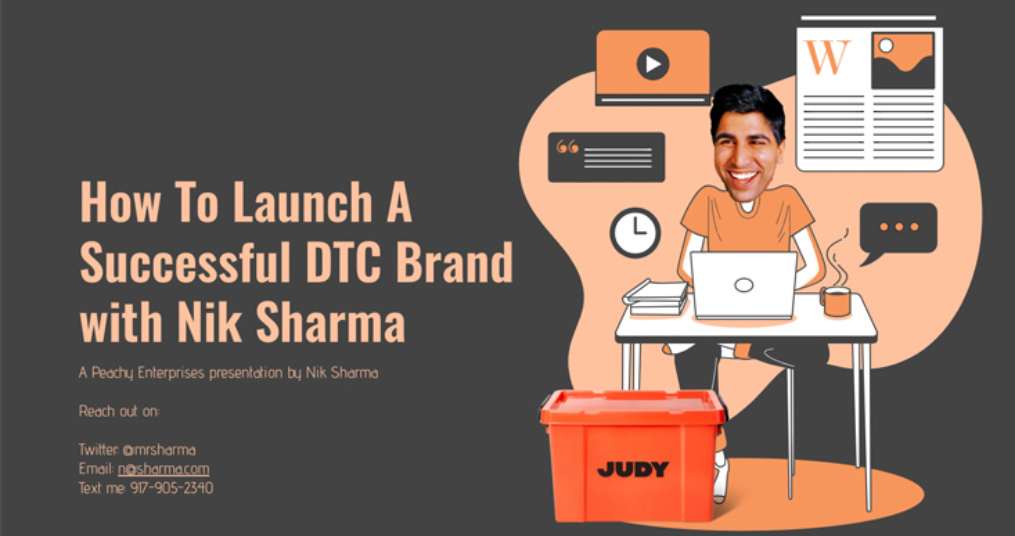Culture and Commerce 2021


Scaling growth in 2021 means leveraging culture to build a commerce brand that people want to buy from and reducing your dependency on paid media. You’ll need to have your commerce foundation of a differentiated brand, solid owned channels supported by always on paid activity with clear creative that makes it easy to buy.
Getting a deep understanding of cultures that matter to your audiences and using these to fuel creative activations, launch new products and open up new channels can help you get balanced growth with a higher proportion of organic sales.
2020 was a tough year for humans, and a mixed year for retailers
With office workers and tourists absent from city centres, nervous shoppers avoiding queues, lockdowns and restrictions hit physical retail really hard. UK high street clothing retailer Primark is the most extreme example of this, their strategy of not investing in online shopping resulted in them losing an estimated £540m in sales during November and December alone.
But 2020 Digital sales leapt ahead with US Ecommerce Penetration going from 17% to 27% in 2 months over Spring, a shift that had previously taken 10 years. Pure play ecommerce retailers reported bumper sales and multi channel operators with strong ecommerce operations made up much of their losses. We witnessed a lot of digital innovation forced by lockdown, with retailers and brands looking to elevate their digital shopping experiences with live video, messaging apps and braver collaborations to win consumers hearts and wallets.

2021 is full of opportunity for growth
Looking forward, 2021 is full of choices for ecommerce brands and retailers who need to scale growth through digital. As we can see from the first few weeks of January, we are still living with the Covid Pandemic. McKinsey recommends that brands treat 2021 as “bridge year” focusing on finding “silver linings” and quickly acting to trial and scale tactics that work. McKinsey BOF's “State of Fashion 2021” report is a good read on this.

Always on foundation for commerce
Brand was frequently overlooked by pure play commerce retailers who took a very short term view of their marketing performance. As these businesses tried to scale they struggled to differentiate themselves from their peers and were unable to defend whatever advantage their commerce foundations might have given them. This piece from Accenture gives the competitive advantage behind having clear story or purpose for brands (HT to Common Thread and their DTC trends article).
Articulating your company as a clearly differentiated Brand will make all of your marketing more effective in the short term. For rapidly scaling companies investing in a brand strategy framework, manifesto, visual identity and hero activations will set you up for success across all your touch-points.


The Foundation for commerce is an always on ecosystem of paid, owned and earned media. In house teams are typically thinly resourced, so auditing your customer journey across paid advertising, owned shopping experience and email marketing to look for leaks and quick wins to improve conversion. Steal a page from the Nik Sharma DTC 101 playbook to ensure your paid, owned and earned assets are fit for purpose. Audit their performance against benchmarks and prioritise weaknesses in the funnel.
Culture and Clarity to paid advertising: If you are a catalogue based ecommerce business you are probably using facebook’s dynamic ads for retargeting and prospecting. One of the things we learned in our time working at Facebook and Instagram is that 70% of people only look at the ad image and the average amount of attention that people give an ad in newsfeed is 1 second (even shorter in stories).
We use a simple “Growth Ads” creative framework that makes sure you grab attention, communicate your benefits and close the sale. Remember mobile newsfeed environments are very fast, so anything that requires a high cognitive load it likely to get scrolled past, so make your dynamic advertising easy to buy from. Check our Deft Collective collaborator Roy Cohen’s post on limbic messaging to understand more how the brain processes messages for performance marketing and also tune in to Ran Mussman and Roy’s series “Performance marketers react”.


Get attention to grow your audiences
Expanding into new channels reduces over dependence on Facebook / Google and opens up new audiences and growth levers. Understanding the audiences and cultural nuances of different channels is critical, and we explored this in our Tik Tok vs Instagram Creative Webinar in November 2020. It’s worth reflecting on how leading brands adapt their content across different channels.
Gymshark is a leading UK fitness retailer, who smashed through the $1bn valuation last year and are a credible threat to the established sports brands. Gymshark were an Instagram first brand, their clothes designed to accentuate your gym toned biceps and butts in selfies. Their Instagram feed reflects this, with lots of aspirational well lit professional shot photos interspersed with instructional gym routines.
When Gymshark shows up on TikTok they’ve changed their tone to match the culture of the channel. Music led, energetic humorous short videos, shot on mobile and edited using native TikTok tools
Fenty Beauty is Rihanna’s joint venture with LVMH, it has smashed convention in the category and built a deep connection with its audience. Launched as an Instagram first brand Fenty Beauty’s Instagram feed is well crafted and product centric, with influencer demos interspersed with in situ product shots.
When Fenty shows up on TikTok they shift to a more raw shot on mobile style, letting their fans get involved with custom tracks around products like #glossbombqueen and encouraging challenge style content like x100 layers or 1 minute foundation challenge.


New Retail experiences
Physical shopping for clothing, beauty and homes used to offer escapism, discovery and a social connection with your friends. During the 2020 Lockdown shop closures, retailers improvised new experiences to try to bring some of this spirit into their digital channels. From Gucci’s video personal shopping to LDC’s weekly IG Live showcases, video shopping which is a mainstream $60bn market in China, is also accelerating in the west.
This piece by Fortune states that companies jumping into live streaming also need to learn that video shopping is about relationships with the audience rather than the latest technology or the influencer of the moment. The basic needs that have always defined retail haven’t changed.
Even in the virtual world, it’s still about the power of human connection and the joy of discovery — wandering into your favourite shop, having interesting conversations, learning the stories behind the products, and getting inspired.
We explored Live Commerce Innovation in a recent sprint.

From Influencer Marketing to Creator led brands
There are an estimated 50m creators who are able to make revenue from their influence, with 2m making a full time living. Influencers are a critical part of the marketing mix, and as the industry has matured, brands are creating products that cater to their needs and allow them to monetize their audiences in new ways. This great article on the Creator Economy by Yuanling Yuan at Signalfire highlights how the ecosystem has evolved to support creators as businesses and should be read in conjunction with Zoe Scaman's work on Fandoms.
The upshot of this is that influencers are diversifying their portfolio of revenue opportunities to reduce risk of whiplash and evolve beyond traditional brand product placement. Smart marketers looking to forge genuine long term relationships with progressive creators need to understand the trajectory of fandoms and look for long term opportunities to for partnerships which help both parties grow.
CONCLUSION
Getting a deep understanding of cultures that matter to your audiences and using these to fuel creative activations, launch new products and open up new channels can help you get balanced growth with a higher proportion of organic sales.
If you want to chat more about Culture and Commerce 2021, drop us a line on hq@deft.be.


